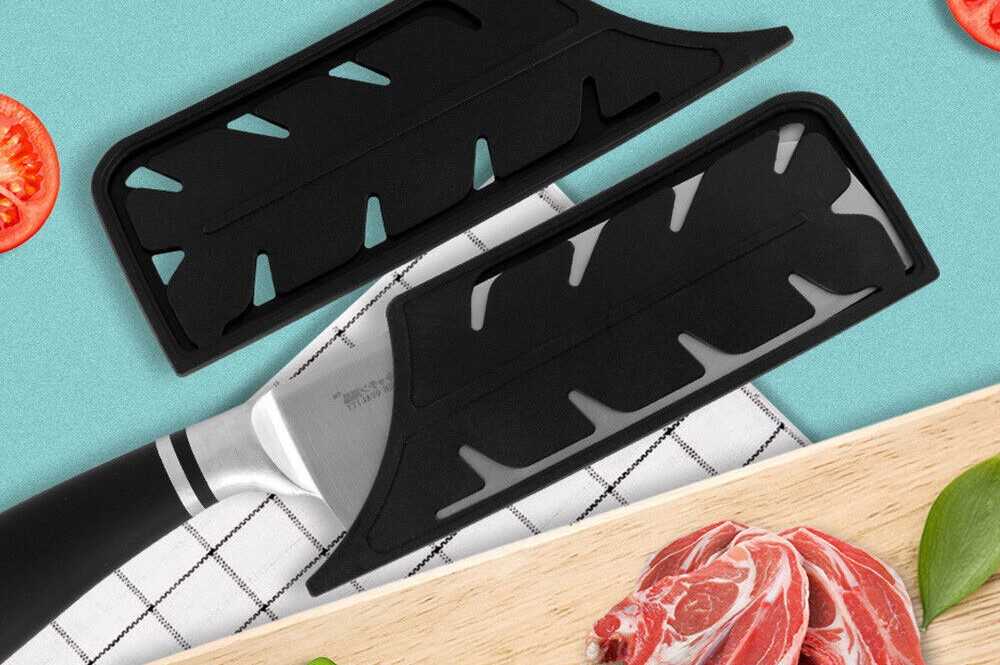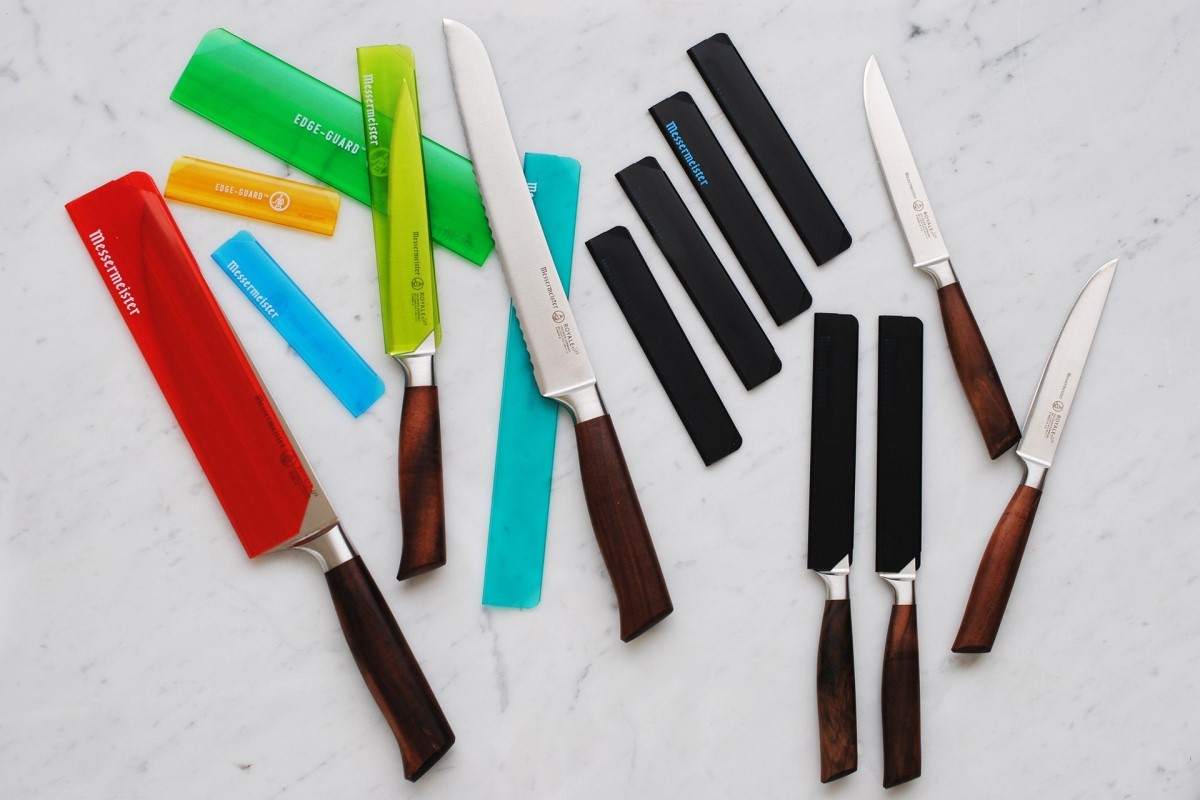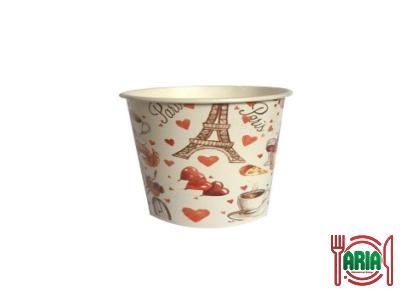Storing blades of a high grade also requires plastic protectors of high quality for you. There is a wide variety of ways in which a knife may be stored, the most popular of which are knife blocks, magnetic strips, and knife bags.
You’ve probably heard that knives shouldn’t be kept in drawers without some kind of protection. A knife guard or sheath is just a scabbard that has been custom-made to fit a particular blade to shield it from harm.
Why Use a Knife Guard When Using a Knife? They look excellent. to safeguard blades while they are being transported.
To avoid the knife getting dull as a result of other goods rubbing against it when it is stored in an area that is also used for other things, such as a drawer. to save you from accidentally cutting yourself when you are reaching for the knife.

To prevent the sharp edge of the knife from marring or scratching any of the other contents in the drawer.
The purpose of this is to prevent blades from poking through a knife bag while it is being transported. When you purchase certain knives, the sheath that goes with it is included in the package.
These are not the things that we had in mind at all. A knife guard is often of a better grade and more durable material than the knife itself, and it is purchased separately.
When shopping for a knife guard, there are a few things you need to keep in mind, and here are a few of them.
When it comes to knife guards, there is no such thing as a universal size. The knife guard must be appropriate for the knife being used. Therefore, you cannot purchase a knife guard intended for a Santoku knife and expect it to accommodate a Nakiri knife.
You have the kind of knife in your possession. You must also ensure that the size is accurate. For instance, a sheath designed for an 18-centimeter Santoku knife of the same brand would not be appropriate for a 24-centimeter Santoku knife of the same brand.
You don’t want your knife to be too long and stick halfway out of the knife guard; that would be ridiculous! Knife guards can be made from a variety of materials, each of which brings its own set of benefits and drawbacks to the table.
Kydex is a type of plastic that, once heated, can be shaped according to the object that it is meant to encase before being allowed to cool back down.
Because of this process, it is now in excellent proportion to the knife. It is also possible to reshape it by heating it once more. In contrast to leather, it is resistant to the effects of water, heat, cold, and sunlight.

Because it does not absorb or keep any moisture, Kydex is an excellent material for storing knives for an extended period. Plastic knife guards, as opposed to leather or Kydex ones, are regarded as being more modern and tactically advanced.
They also come at a lower overall cost. They are not only lightweight but also hard and simple to clean. Nylon is an affordable and popular alternative to plastic.
Because it does not absorb moisture, not only is it simple to clean, but it will also keep your knife dry. Nylon, on the other hand.
Think about how much money you are willing to spend on a knife guard before you go out and buy one. This will also have an impact on the kind of knife guard that you end up purchasing.
The cost of the guard is determined by the type of material it is made of, the level of craftsmanship that went into making it, and the size of the guard.
The price of knife guards made of synthetic fiber is typically lower than that of guards made of Kydex, nylon, or leather.
If you plan on storing your knives in the knife guard, you should avoid using leather because it absorbs and retains water, which can cause the blade to rust and become damaged. When it comes to storing knives, plastic or Kydex is the material of choice.

Because a knife guard needs to keep you and the knife safe, it should come equipped with several different safety mechanisms.
Some knife guards have a pin at the opening that locks the knife in place and prevents it from slipping out.
This keeps the knife secure and prevents accidental discharge. Additionally, the guard should have sufficient strength to withstand continuous contact with the pointed edge of the knife.
A sharp knife will tear through a leather guard that is not strong enough, which would not be in your best interest. If you don’t have enough knives to justify purchasing a knife block or a magnetic strip, you should still protect each knife with its knife guard.
It is the most appropriate present that you could get for your knives. Before placing your purchase, please examine either our pricing list or our plastic knife protection.




